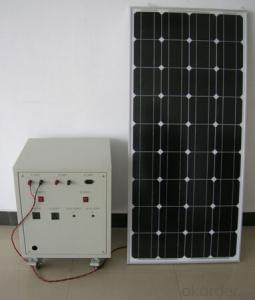Solar Inverter 8000w
Solar Inverter 8000w Related Searches
Ac Inverter For Solar Panels Solar Panel With Ac Inverter Gas Furnace With Ac Panda Hot Water Bottle Cover Minion Hot Water Bottle Cover Abb Solar Water Pump Inverter Solar Water Pump Philippines Extra Long Hot Water Bottle Solar Panel Dc To Ac Inverter Old Fashioned Hot Water BottleHot Searches
1 Mw Solar Inverter Price 4 Kva Solar Inverter Price 10 Kva Solar Inverter Price 8 Kw Solar Inverter Price 20 Kw Solar Inverter Price 30 Kw Solar Inverter Price 30 Kva Solar Inverter Price Abb 50 Kw Solar Inverter Price 3.5 Kw Solar Inverter Price 1.5 Kw Solar Inverter Price 3.5 Kva Solar Inverter Price 1.5 Kva Solar Inverter Price 7.5 Kw Solar Inverter Price 7.5 Kva Solar Inverter Price Utl Solar Inverter 2kva Price Mtn Lumos Solar Inverter Price 1.5 Kw Solar Inverter Prices Solar Inverter Service Near Me Solar Inverter Shop Near Me Solar Inverter Dealer Near MeSolar Inverter 8000w Supplier & Manufacturer from China
Okorder.com is a professional Solar Inverter 8000w supplier & manufacturer, offers integrated one-stop services including real-time quoting and online cargo tracking. We are funded by CNBM Group, a Fortune 500 enterprise and the largest Solar Inverter 8000w firm in China.Hot Products
FAQ
- Yes, a solar inverter can be easily integrated into an existing electrical system. Solar inverters are designed to seamlessly connect with the existing electrical infrastructure of a building or property. They can be installed alongside the main electrical panel and connected to the grid, allowing the solar energy generated by the panels to be converted into usable electricity for the building's consumption. With the help of a qualified electrician or solar installer, the integration process can be straightforward and efficient.
- Yes, a solar inverter can be used in a solar-powered air conditioning system. The solar inverter is responsible for converting the DC power generated by solar panels into usable AC power for appliances, including air conditioners. By utilizing a solar inverter, the solar-powered air conditioning system can effectively harness solar energy to cool spaces while minimizing reliance on traditional energy sources.
- A solar inverter handles sudden changes in solar irradiation by continuously monitoring the incoming solar energy and adjusting its output accordingly. When there is a sudden increase in solar irradiation, the inverter quickly ramps up its power conversion to match the higher energy input. Similarly, when there is a sudden decrease in solar irradiation, the inverter reduces its power conversion to align with the lower energy input. This dynamic response ensures that the inverter efficiently converts the available solar energy into usable electricity, maintaining a stable power output despite fluctuations in solar irradiation.
- Solar inverters typically have a lifespan of 10 to 15 years, but this can vary depending on factors such as quality, maintenance, and usage.
- A solar inverter handles variations in solar panel degradation over time by continuously monitoring the power output of the solar panels and adjusting its operations accordingly. As solar panels degrade over time, their efficiency decreases, resulting in a decrease in power output. The inverter detects this decrease and adapts its operation to maximize the power conversion and maintain optimal performance. This ensures that the solar energy harvested from the panels is efficiently converted and utilized, despite variations in panel degradation.
- A solar inverter handles power export limitations imposed by the grid through a process known as grid-tied or utility interactive operation. It continuously monitors the grid's voltage and frequency, adjusting the power output of the solar system accordingly. If the grid is unable to accept additional power due to export limitations, the inverter will reduce the output of the solar system to ensure compliance with the grid's requirements. This allows for a smooth and safe integration of solar power into the grid, preventing any potential disruptions or overloading.
- Yes, a special inverter is needed for a battery storage system. Unlike a regular inverter that converts DC power from solar panels into AC power for immediate use, a battery storage system requires an inverter that can not only convert DC power to AC power but also manage the charging and discharging of the batteries efficiently. This special inverter is designed to work seamlessly with the battery storage system, ensuring optimal performance and maximizing the utilization of stored energy.
- A solar inverter protects against overvoltage by continuously monitoring the voltage levels of the solar panels. If the voltage exceeds a certain threshold, the inverter automatically reduces the power output or disconnects from the grid to prevent damage to the system and ensure the safety of the electrical components.













































